The 2023 global electrical panel assembly market, which includes switchgear, power distribution, and control panels, is estimated to exceed $200 Billion. This market is expected to grow at an annual rate (CAGR) of 5-6% through 2032, driven by several key trends:
- Increased Application of Electrical Enclosures: The electronics and electrical industries increasingly adopt electrical enclosures for various applications.
- Growing Demand for Energy Power Sources: As the need for reliable power supply continues to rise, the demand for electrical panels supporting energy distribution and management is also increasing.
- Advanced Technology and Factory Automation: Industries are embracing automation and smart technologies, leading to higher demand for sophisticated control panels and switchgear.
- Urbanization and Infrastructure Investments: Rapid urbanization and infrastructure development worldwide drive the installation of electrical panels in buildings, factories, and public spaces.
Despite this growth, producers of electrical cabinets face significant challenges. Skilled labor shortages for cabinet assembly remain a critical issue. Notably, wire assembly constitutes 49% of the total assembly time, as highlighted by a study conducted by the University of Stuttgart in Germany (.
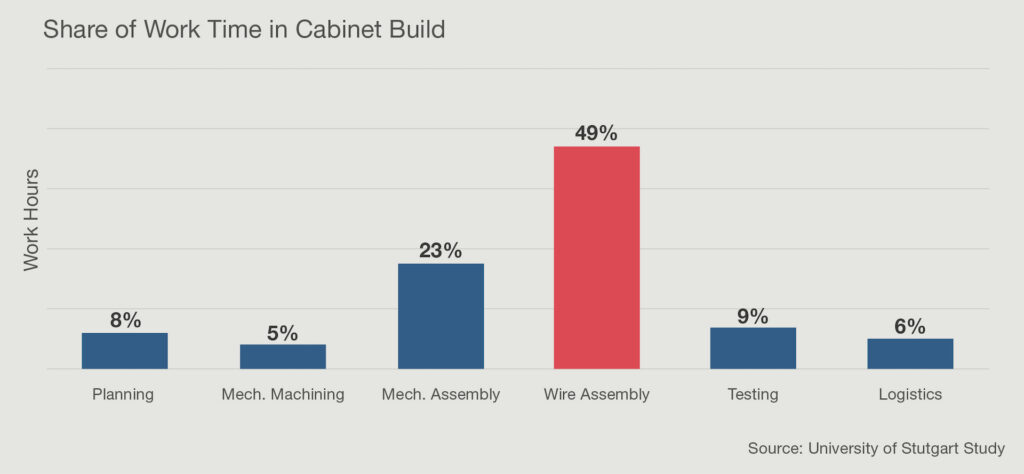
In the face of labor shortages and the need to maintain a competitive edge, manufacturers are encouraged to modernize their production methods to enhance efficiency and process quality. A prime target for improvement is the wire assembly process, which accounts for a significant 49% of labor expenses and offers substantial opportunities for cost reduction.
Traditionally, wiring an electrical cabinet involves providing a schematic print to the assembler, who then determines the wiring requirements and manually processes each wire: cutting it to the required length, labeling it, stripping it, and processing the ends. Manual wire assembly requires highly skilled labor, is prone to human error, and is time-consuming, with an average completion time of 4 to 7 minutes per wire.
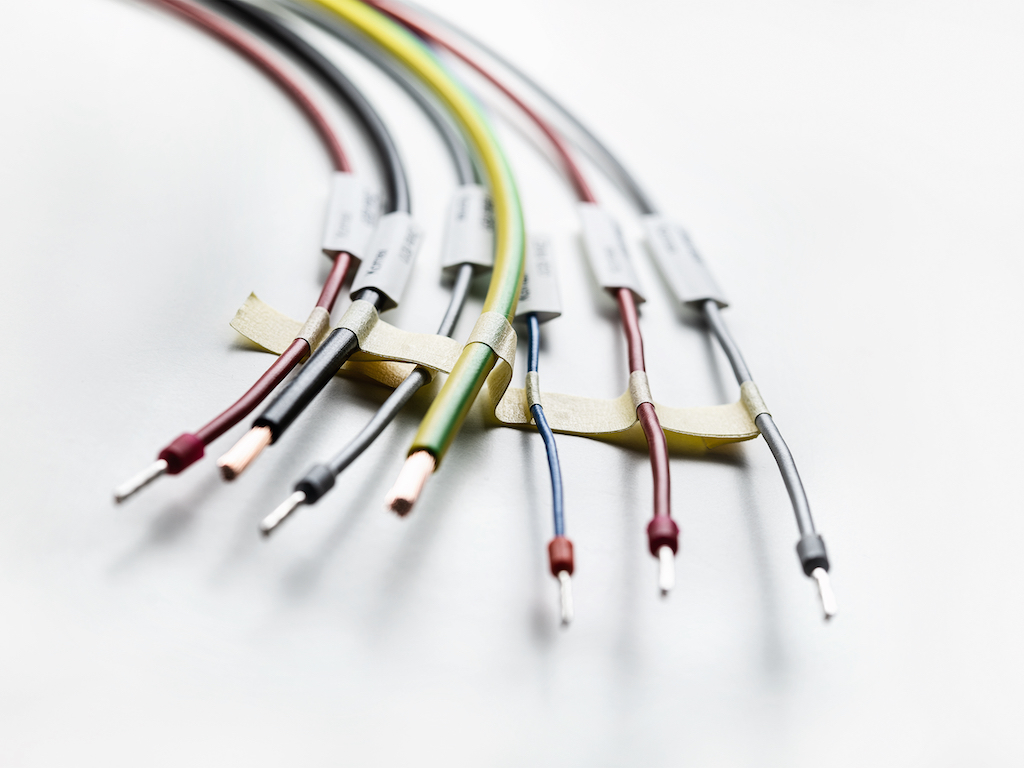
Data2Wire introduces an innovative approach to electrical cabinet assembly, potentially reducing wiring assembly time by up to 80%. The core of this system lies in using digital filesto communicate assembly requirements, eliminating the need for paper schematics. By leveraging digital files, automated wire processing equipment can efficiently produce fully processed and marked wire sets. These wire sets are then supplied in sequence during the assembly process, already labeled with essential information such as component numbers and cavity numbers. As a result, routing wires within the electrical cabinet becomes remarkably straightforward, ultimately reducing the demand for highly skilled labor.
For a successful transition to digital-based production, it is essential to adopt 3D Computer-Aided Design (CAD) systems like Zuken or EPLAN for cabinet design. These software packages provide critical wire assembly information, including wire lengths, marking instructions, and end-of-wire applications. Manufacturers then employ conversion tools to translate this data into operational instructions for wire processing machines, ensuring wires are produced in the correct sequence for assembly. Following production, wires are installed sequentially, with operators simply confirming the markings against device codes.
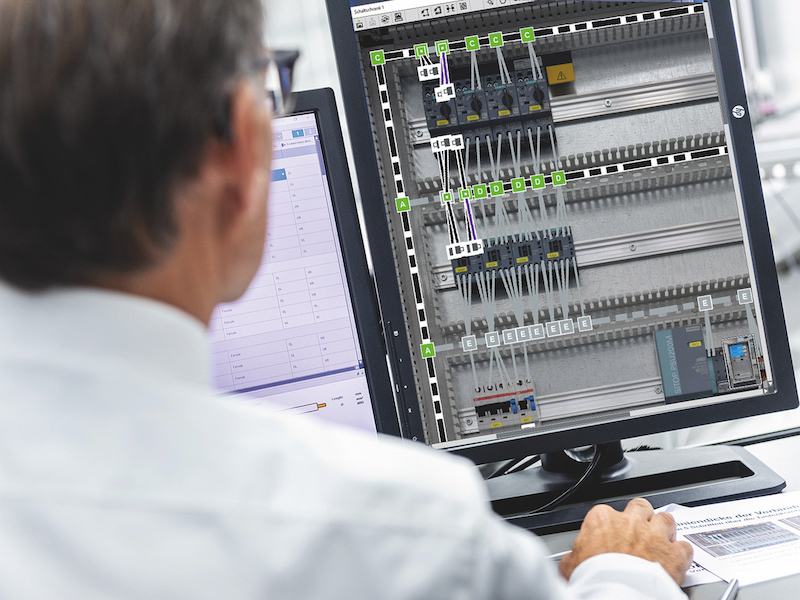
For customers who haven’t yet ventured into 3D CAD design, Digital Lean Wiring (DLW) software comes to the rescue. DLW allows wire assembly information to be developed using wire lists, 2D files, or even high-definition photos of sample cabinets. It offers a range of options for importing and preparing data. For instance, existing wire lists can define how connections should be marked, and 2D drawings in various formats can be effortlessly imported. Moreover, using DLW enables customers to strategically sequence wires and bundle them to align with the
component design of the cabinet. This innovative approach, known as component-oriented wiring, significantly reduces assembly effort for the customer.
Here is an example of a typical “print” based assembly process for wiring an electrical cabinet. According to the University of Stuttgart’s study on cabinet building, the average time per wire is 266 seconds, translating to just under 4.5 minutes per wire. This insight underscores the potential time savings achievable through digital solutions.
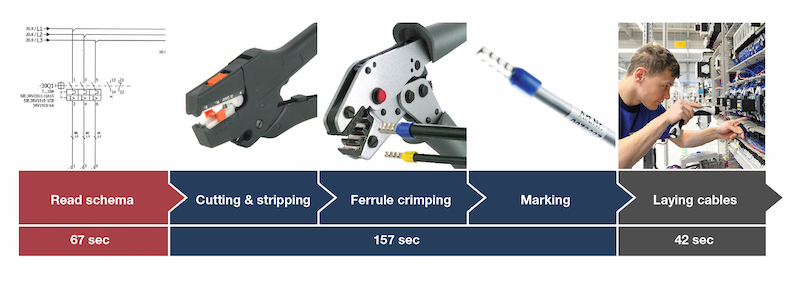
By employing the Data2Wire production techniques, which incorporate a digital infrastructure and sequential wire production, the overall time required for wire assembly can be reduced by up to 212 seconds per wire. This translates to an 80% efficiency gain over manual processes.
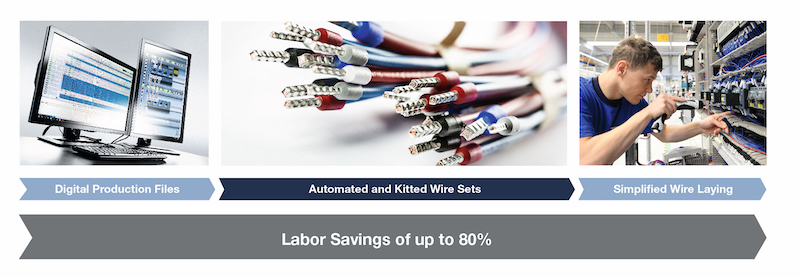
This innovative approach not only reduces costs but also provides added benefits to manufacturers. By implementing the Data2Wire system, the total production time of an entire cabinet can be cut by up to 40%, leading to greater production flexibility and a reduction in inventory. The system allows for real-time customer changes, which can be seamlessly implemented through the digital workflow. Additionally, the need for highly skilled assembly is reduced as digital production methods are aligned with a computer-savvy workforce.
Traditionally, designing and building control cabinets manually has been extremely time-consuming, relying on skilled labor. However, the Data2Wire system revolutionizes this process by introducing a digital information flow and automated sequential wire sets. As a result, it significantly reduces throughput time and enhances production flexibility. Producers can now improve efficiency, leading to significant time and cost savings for manufacturers. Simultaneously, this innovation enhances overall quality and economic efficiency.
Komax will showcase the Data2Wire process at the Electrical Wire Processing Technology Expo in Milwaukee. Don’t miss the opportunity to witness this cutting-edge process in person on May 15-16. www.komaxgroup.com






























































